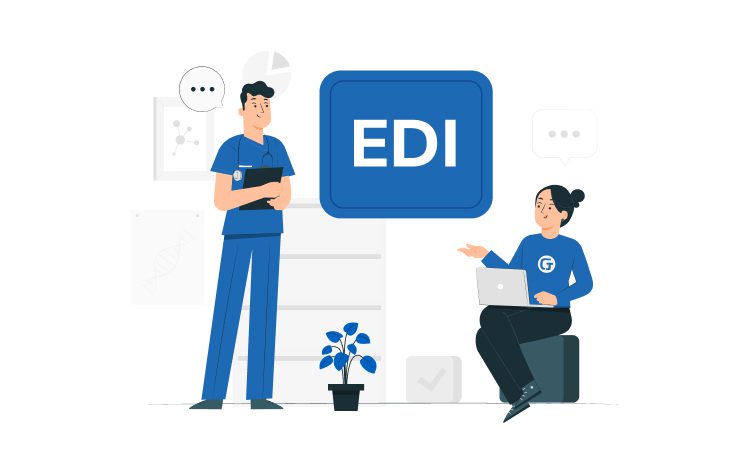
PoC in Software Development: Key Benefits and Peculiarities of Creation



Working on a new project is associated with uncertainty: initially, you do not know whether your idea is feasible and how to implement it. One way to get answers to these questions is to use a proof of concept approach.
The purpose of a PoC in software development is to check whether the software idea is technically feasible and, as a result, establish a plan of action for the creation of the product. Let’s look at when and why we should use this approach, learn its challenges, and what strategy to follow.

Content
Do you have an interesting idea? Do you want to start implementing it immediately? Don’t hurry! Firstly, it is necessary to analyze its functionalities and features. Secondly, it is important to know what methods and technologies can be used to realize a product at a reasonable cost. It will give you an idea of the technical feasibility of the solution, as well as avoid many difficulties in the future.
A PoC in software development is used at the start. It is not a final product, but, for example, a computer model. It can also take the form of a presentation, documentary, or demo, i.e., no coding, design, or interface development is required.
However, after verification, it should yield thorough documentation of clear requirements and technical specifications.
Besides feasibility, it determines the requirements on the basis of which the product should be created. The verification results are applied within the company by the team members. Now you know what to do next: develop the project, complete it, or change technologies and methodologies. If you are convinced that the concept works, you can raise internal funds.
Often proof of concept is confused with other approaches, such as prototype and MVP. The point is that all of them are used at the beginning of work with a new product. However, these are three separate stages with different goals, which, by the way, proceed with each other. Let’s have a look at their peculiarities in the table.
| POC | Prototype | MVP | |
| Purpose | Check if an idea (or one function, one scenario) is feasible and whether it is worth doing. | Define the vision of the final product (several features) and how it will be used. | Find out if the industry needs a product and receive feedback from the audience about it. |
| Audience | Use within a team | Show to interested users (potential investors) | Testing on groups of the first customers selected in advance |
| Risk management | Errors exception during product development | Increased user satisfaction with the program workflow | Preventing situations when time is spent on an unpromising project |
| Resources required | Some investments make sense. Technical expertise will be needed | You will need a minimum of finance. Almost no technical resources are needed, the development may not be needed | A decent budget is to be provided. Technical expertise and resources for development are important |
| Benefit | Internal funding, no income | Is not meant to bring revenue | Can bring revenue via the early customers’ purchases |
| Perspectives of use | As a base to build MVPs | Work with a proven design | Transforming from a minimal to a full-fledged version of the product |
| Result | Developments with expert opinion | Interactive project model | Final working product |
Therefore, a prototype is beneficial when you want to know what the product will be, or you lack the time or resources to present it to users. You can use MVP to see the audience’s feedback on the solution and attract the first profit.
POC in software development verifies all the technologies and methods and gets you evidence that your idea is feasible.
Remember, we mentioned that these are three different types? Yes, they can be used separately, but you can benefit the most only by making them part of a comprehensive strategy. So, in this sequence, a PoC goes first.
After getting the proof, you should proceed to the implementation (prototyping). The third step is MVP. It’s essentially a simplified version of your idea but with priority features.
Let’s find out what you will get using the PoC approach (either separately or as part of a comprehensive strategy).
Even if an idea seems brilliant to you, it does not mean that it can be implemented. And in general, if it is profitable to work with it in the current conditions. So, a proof of concept tests the validity of the software idea and checks if it fits the trends.
First of all, it allows you to assess the possibility of creation and understand: can a product work in real life before you begin development? While verifying, you can find out what tools will assist solve the problem as quickly as possible without additional costs.
Moreover, when it comes to launching a new software product, you can’t make it without trend analysis. You’ll be able to make sure that the product will fit the specific problems that consumers face. And that’s the most important thing when launching to new markets.
You should understand that a POC is not a final product. It is the first preparatory step to software development, which precedes the creation of the prototype and the basic version. It allows you to plan your time and resources properly. There are 2-3 developers with relevant skills and a manager who comprehends the technical and business requirements.
Together, you can test assumptions, choose implementation options, and use additional resources. When discoveries are made, new data become available: priorities, budgets, or even direction may be changed.
Unlike the basic version, a PoC is a small project aimed at testing important hypotheses before starting work. With it, you can clarify the product creation path, identify limitations, and weigh the pros and cons. In other words, it tells you whether it is worth starting or not.
One of the most important outcomes of PoC is reducing the uncertainty. It creates transparency that allows reducing risks.
It should involve all stakeholders engaged in the development process: QA, PM, remote developers. They get together to discuss the limitations, opportunities, and risks, as well as to agree on the direction of the project. It’s an essential step in laying solid ground not only for creating but also for a smooth development process, testing, modifications, and launch.
Convincing potential investors that your concept is valid and worth their money requires more than enthusiasm. The proof of concept is fundamentally important, as it will convince even the most skeptical investors about software development or the feasibility of your choice.
Remember that everyone wants to invest in a project that will surely succeed, a financially reliable, promising, and beneficial project for the audience. Moreover, when testing the concept, you can discuss the key points with the company’s management, who makes decisions on internal funding.
Your job is not only to show the benefits of the future product but to make sure that you understand the implications and are ready to overcome any obstacles during work.
It is not the most obvious benefit of the approach, but it should not be omitted. As you create a POC, you get closer to your idea and see it differently. You also get an idea of what you need to get started: technology, tools, team, budget.
Thus, the idea ceases to be abstract: you understand what problems in the market you can solve and how to achieve them. Working out the important nuances at the startup stage helps you avoid the problems typical for the creation stages and marketing.
Thus, operating with PoC data rather than assumptions will allow you to make informed decisions in software development. Have your expectations been met? Then you can get to work and raise funds.
If it turns out that the idea can not be realized or does not meet the requirements, you should adjust your strategy or choose alternative ways of development. In general, the test can be repeated until you reach the needed result.
It is a demonstration of how feasible your idea (method, technology) is. The approach is aimed at making sure that the concept will work in real life in a short time and without unnecessary costs, and therefore, it makes sense to start the project and raise funds.
You should set a purpose and choose the features that can complicate the development. Then you make up use cases, i.e., expectations of how the real users of the product will act. Tasks are divided into periods of 3-4 weeks (if you’re not utilizing Kanban), and a team of engineers, a tester, and a manager is assigned to the project. The results are discussed among those involved with the product. After weighing the pros and cons, they make a decision either to release the product or search for alternatives.
This approach is of great importance in pharmaceuticals when it is necessary to test a new drug in terms of benefit and safety during long-term use. In filmmaking, it is associated with testing new techniques for conveying artistic ideas, animation. It is actively used in engineering and computer security.








